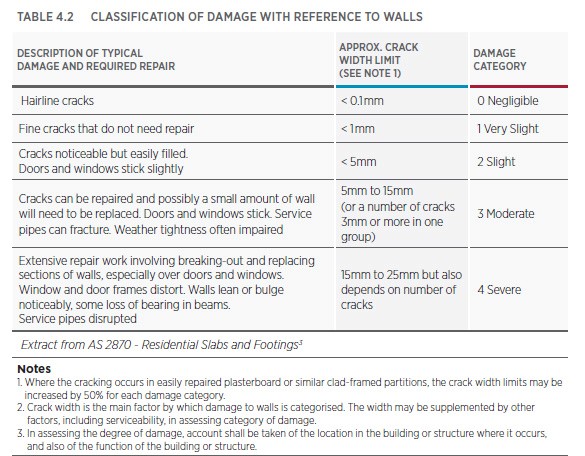Dry, hot weather can lead to a variety of concerns, including higher energy bills and devastating bushfires. It can also lead to cracks appearing in built structures, sometimes overnight.
Blame it on the weatherHeat, low rainfall and sun exposure have a drying effect on the soil and vegetation further robs it of valuable moisture. This change in soil moisture leads to soil shrinkage which puts pressure on the foundations of built structures, causing them to move.
Buildings are designed and constructed to withstand most weather conditions, but hot and dry conditions can aggravate the risk of cracks appearing in many components of the building due to this movement.
Experts suggest that up to 90 per cent of all cracking in built structures is due to changing water content in reactive soils.
How plasterboard reacts
It is important to emphasise that plasterboard is not known for cracking unless an external force acts upon it. When compared to other building materials, it is dimensionally quite stable, which means it exhibits relatively small changes of dimension in response to variation in temperature or humidity, even during unusually hot and dry summers.
When plasterboard cracks, it displays the effects of movement elsewhere in the building structure or sub-frame.
All buildings are subject to movement and experience small changes in dimensions, and minor plasterboard cracks are often the result of the building settling over time. The truth is that all buildings will display a certain amount of superficial plasterboard cracking as this settling process continues.
Other factors that might lead to the cracking of plasterboard installations include:
- plasterboard joints located near the corners of windows or doors
- control joints further than 12 m apart
- unexpected building movement
- bridging a movement joint with plasterboard
- hard fixing of plasterboard to two different substrates without a control joint
- in ceilings at the junction of a large room to a corridor
- use of fibre glass tape for joints without back blocking
- use of three coats of all-purpose compound for joints without back blocking.
Download the latest Siniat Plasterboard Installation Guide to learn more about best practice when installing plasterboard.
When is a crack more than just a crack?
It can be difficult to differentiate between “normal” cracking due to the settling of the building and cracks that need closer inspection.
According to the Queensland Building and Construction Commission’s Standards and Tolerances Guide, cracking in internal plasterboard walls and ceilings is considered a defect if it is visible from “a normal viewing position”.
According to the Guide, a normal viewing position is looking from a distance of 1.5 m or greater with the surface or material being illuminated by “non-critical light”. “Non-critical light” means the light that strikes the surface is diffused and not parallel to that surface.
Cracking after the initial 12 month period is assessed in terms of Table 4.2 in the Guide. Category 0,1 and 2 cracks are not considered defects, but Category 3 and 4 cracks are.

Table used with permission from the QBCC
There are a few other clues that might indicate that you are dealing with something more serious when assessing cracks in internal linings.
The following tips can indicate that the damage is the result of structural movement:
- Cracks in the main floor slab and garage floors
- Fractures in ceramic tile areas
- Brickwork cracking
- Cracks that appear to worsen over time
- Doors and windows that stick
- Leaks caused by damage to pipes and roofs
Prevention is better than cure
There are only two approaches when dealing with plasterboard cracks: preventing the problem from occurring in the first place or dealing with the cracking once it’s there.
Minor plasterboard cracks are easy to repair, but repairs should not be done without correctly identifying the cause of building movement as it may result in further (and expensive!) rectification at a later stage.
There is not much that can be done to avoid building movement due weather conditions or the building settling, but following the correct guidelines when installing plasterboard systems can go a long way to reducing the risk of plasterboard cracking. This includes following best practice guidelines, such as placing control joints at the right intervals.
To learn about best practice when installing plasterboard download the latest Siniat Plasterboard Installation Guide.
Do you require more information about Siniat's range of plasterboard products?







